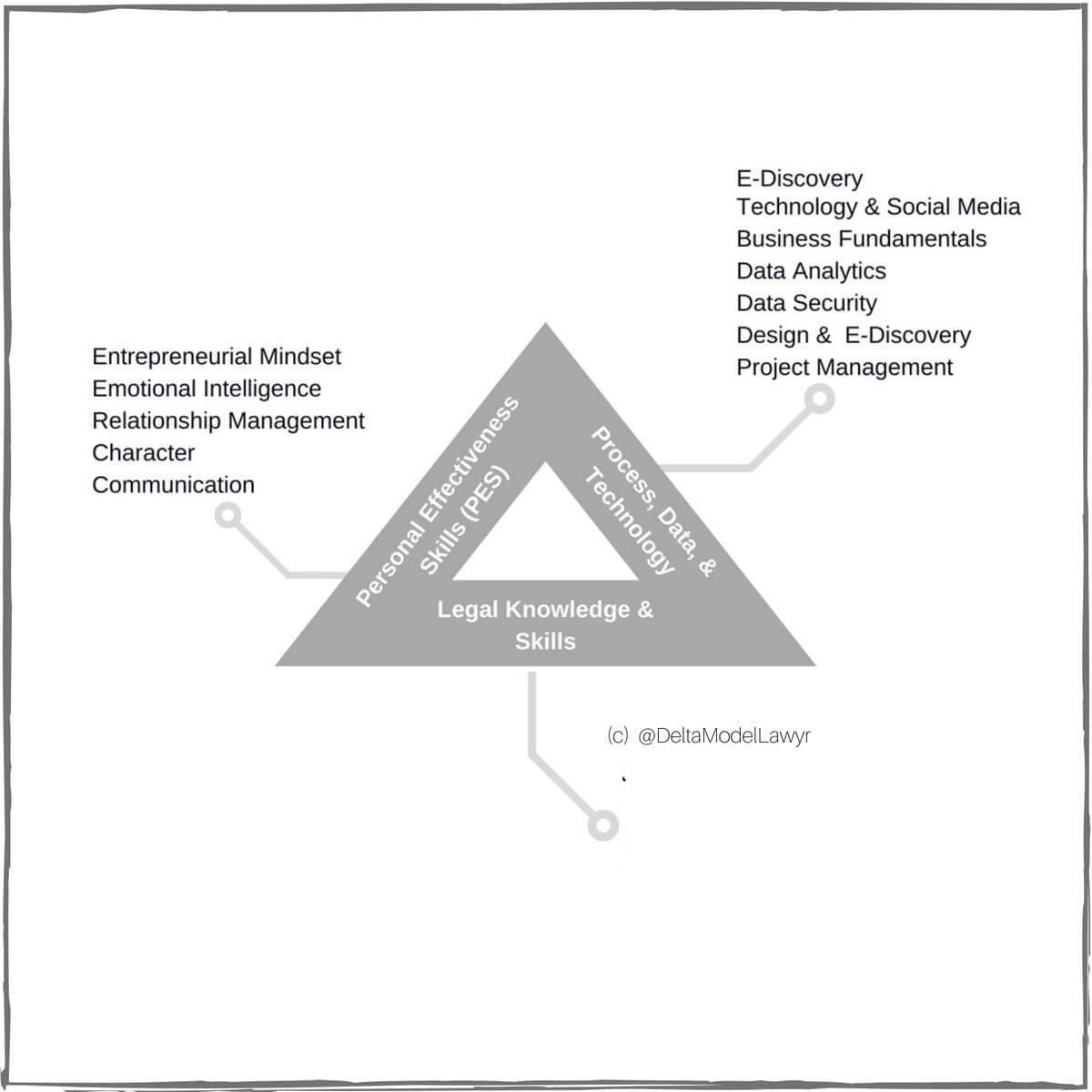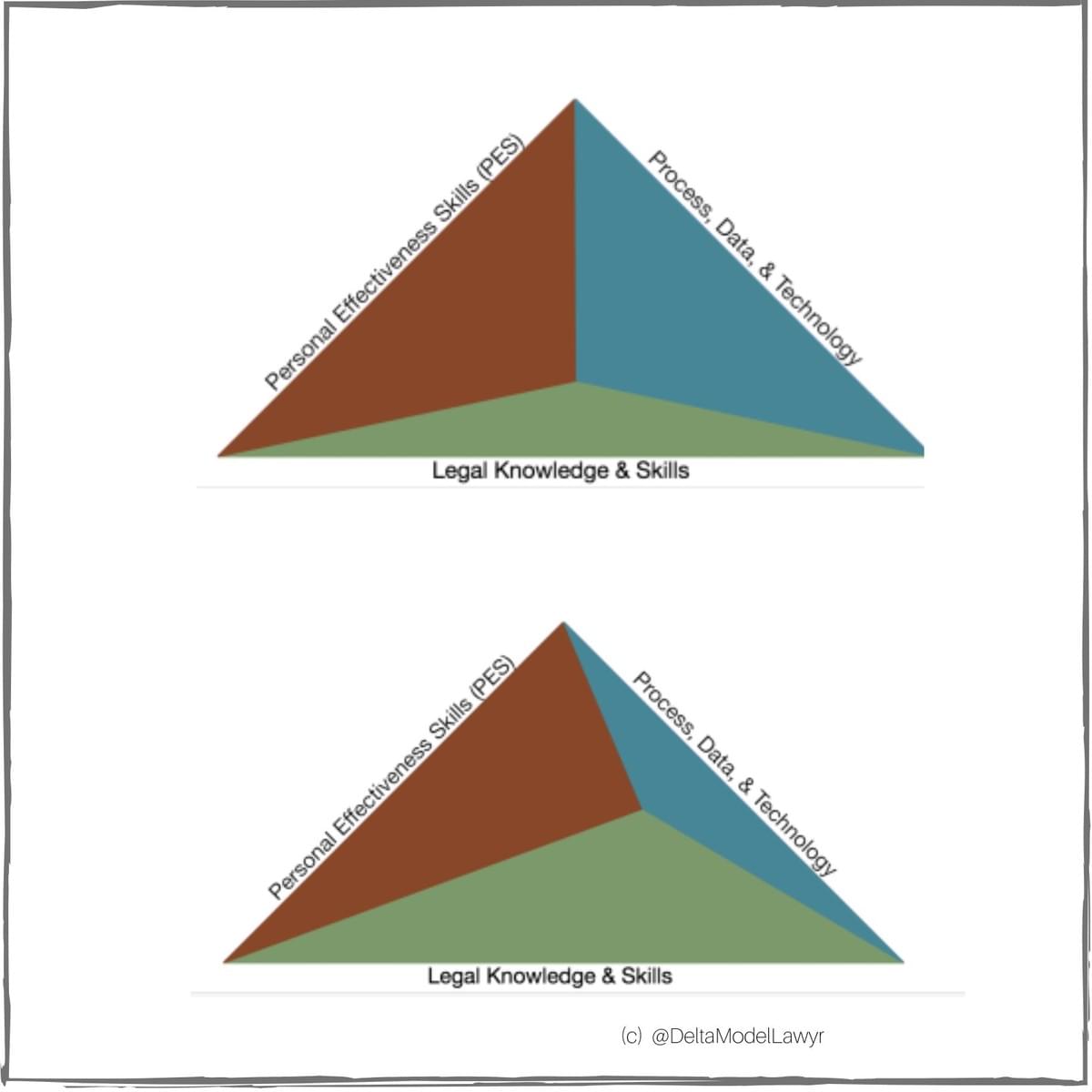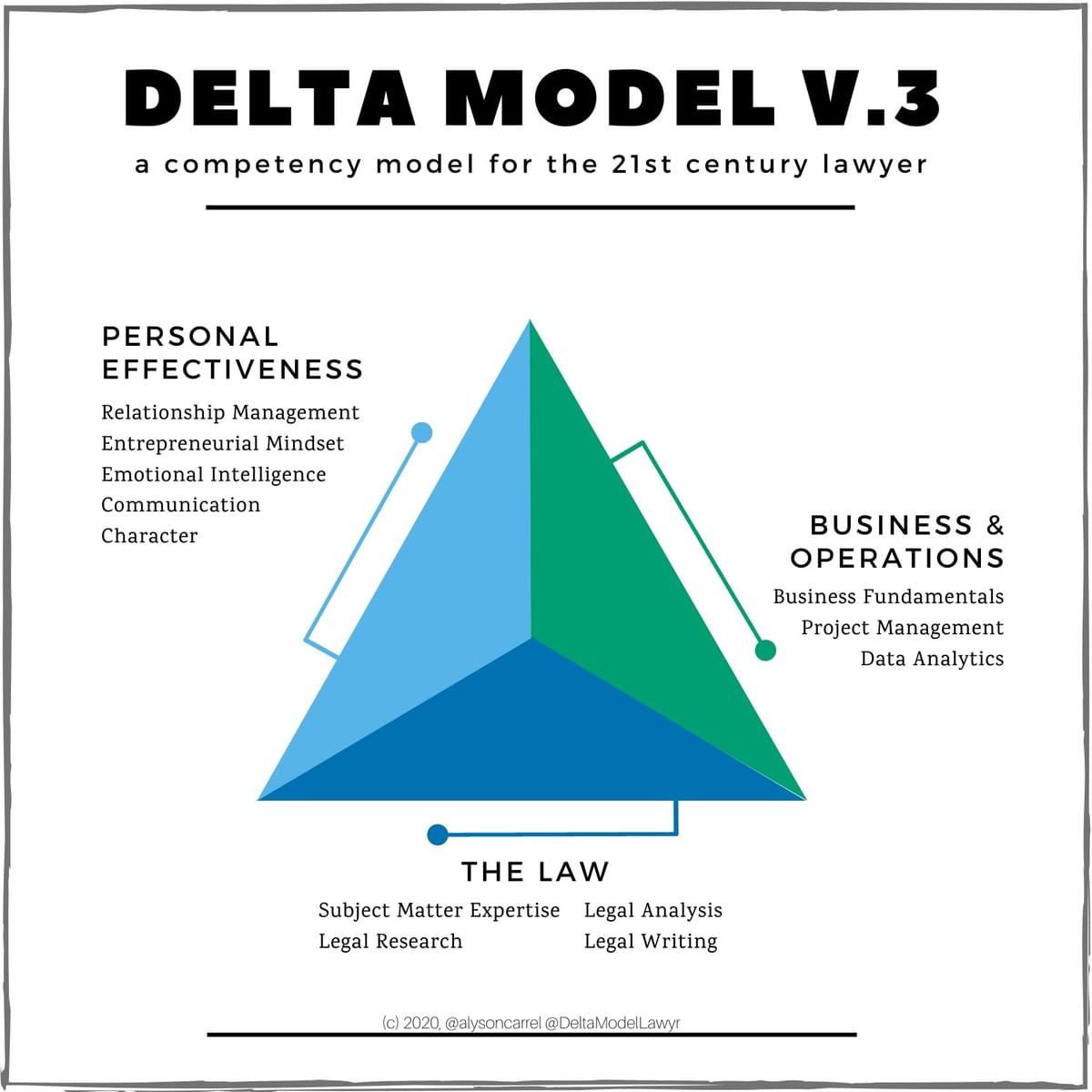

The Delta Model
an agile competency model for the modern legal professional

ABOUT
The Delta Model for lawyers consists of three major competency areas necessary for success: The Practice, The Process, and The People
The Delta Model was created in 2018 to reflect the holistic set of competencies a 21st-century legal professional needs to succeed. Using the Greek letter delta (𝝙) to symbolize the changing nature of legal services, the model is visualized as a triangle, with each side representing one of the following three broad competency areas: The Practice (knowing, researching, and clearly communicating the law), The Process (delivering legal services efficiently and effectively), and The People (understanding and relating to our clients, our colleagues, and ourselves).
The model is informed by established research such as the Carnegie and MacCrate reports, Shultz & Zedeck’s 26 Predictors of Success, IAALS’s Foundations for Practice, and contemporary commentaries by thought leaders such as Michigan Supreme Court Justice Bridget McCormack, Luci Bassli, and Professors Julian Hatfield, Margaret Hagan, and Bill Henderson. In addition, Thomson Reuters sponsored original research validating the model for the White Paper, Adapting for 21st Century Success. Professor Alyson Carrel's article Legal Intelligence through Artificial Intelligence Requires Emotional Intelligence for the Georgia State University School of Law's 2019 symposium, Legal Intelligence through Artificial Intelligence Symposium, provides a synopsis of what the model is, how the research shapes the model, and how the legal profession can benefit from the model. The Legal Talk Network featured Cat Moon on their podcast On Balance to discuss examples of how legal professionals and law students are putting the Delta Model into use.
Below is a brief history of how the model developed and an overview of the most recent iteration by Professors Cat Moon and Alyson Carrel called Design Your Delta.
Development of the Delta Model

Version 1.0
Originally developed in 2018, the Delta Model built on the notion of a T-shaped lawyer (focused on technology, process improvement, and data analytics) by highlighting the related and equally important skills associated with emotional intelligence

Version 2.0
Adding a shifting midpoint creates a more dynamic delta model, reflecting the different depths of skill an individual might need in each competency area depending on their role in the legal profession.
[CEE Legal Tech created a working version of version 2.0 where you can control the midpoint location]

Version 3.0
Independent research conducted by Thompson Reuters validated the model and further elucidated which specific competencies are required under each of the three major competency areas (highlighting a clear priority for more personal effectiveness skills in the law)

The Delta Model Today
In 2020, Professors Cat Moon and Alyson Carrel created a more agile and simpler version of the model that puts the Delta Model into action. They call it Design Your Delta.
First, they renamed the three sides: The Practice, The People, and The Process.
Second, they removed any pre-defined lists of skills, allowing individuals and organizations to design customized Deltas that best reflect their unique values and priorities as well as any recent developments in the legal profession.
ADDITIONAL RESOURCES:
WATCH: Delta Model Playlist on YouTube
LISTEN: Three Geeks and the Law Blog podcast
DesignYourDelta Blog: Why the Practice, Why the Process, Why the People
Lawyer Competencies for the Computational Age - MIT Computational Law
A Framework for Reimagining the Legal Professional Pipeline - Law Insider
Legal Intelligence through Artificial Intelligence Requires Emotional Intelligence - Georgia State Law Review




